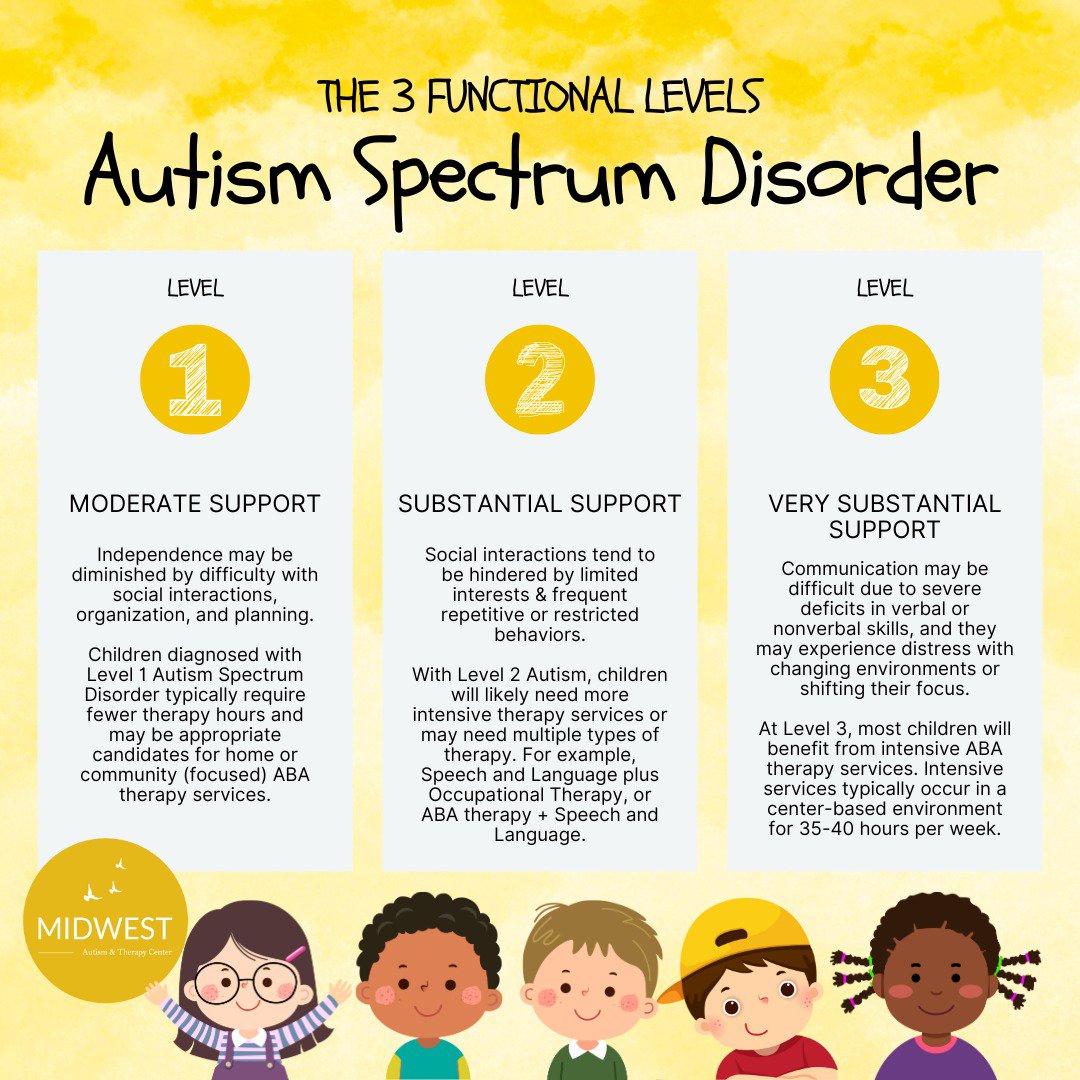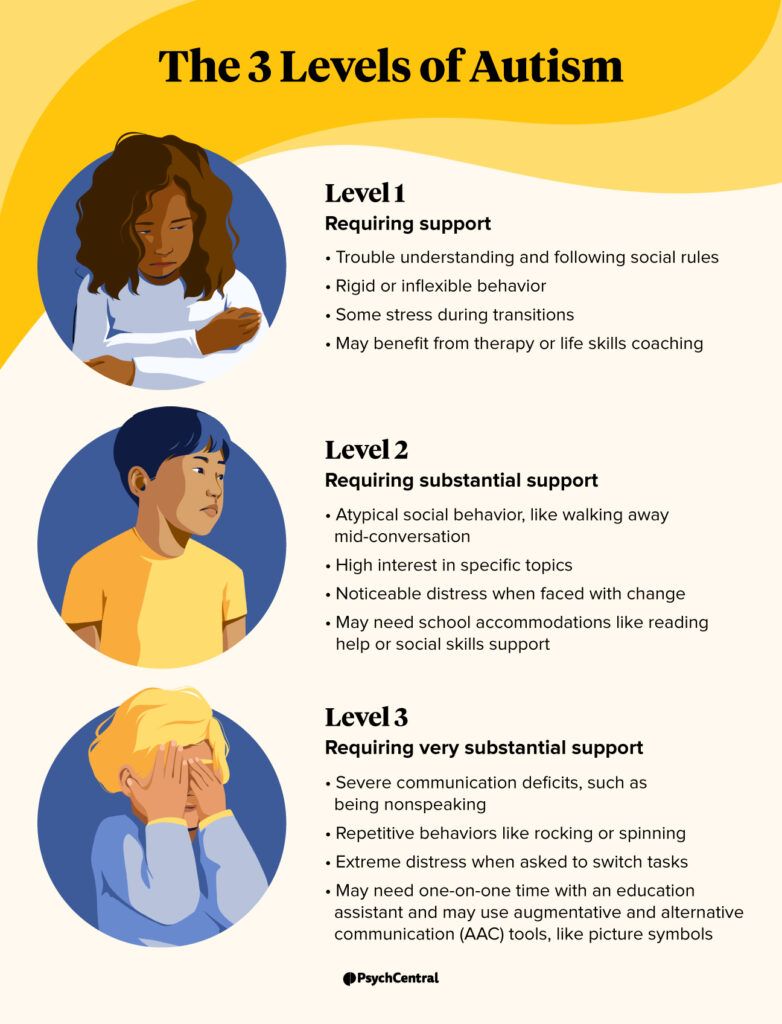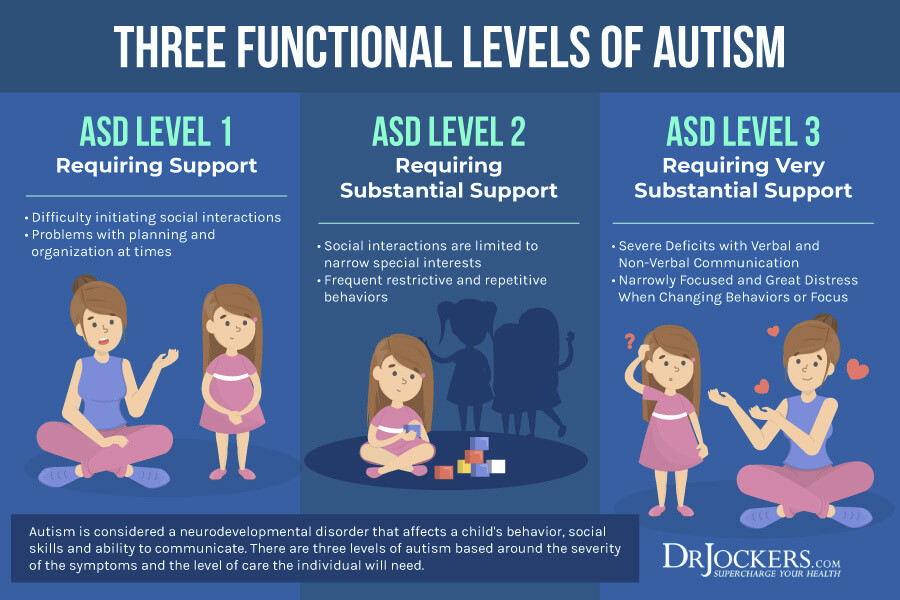Understanding Autism Spectrum Disorder (ASD) can feel overwhelming, especially when it comes to its different severity levels. If you or someone you love has been diagnosed with Level 3 Autism Spectrum Disorder, you’re likely seeking clarity and guidance.
What does Level 3 really mean? How does it affect daily life? And most importantly, how can you support and thrive in this unique situation? Level 3 is the most challenging form of ASD, characterized by significant communication difficulties and restricted, repetitive behaviors.
But don’t let this intimidate you. Knowledge is power, and with a deeper understanding, you can navigate this path with confidence and compassion. We’ll break down what Level 3 Autism Spectrum Disorder entails in simple, clear terms, providing insights and strategies to help you connect and communicate more effectively. Stay with us as we explore practical ways to improve quality of life and foster meaningful connections. You’re not alone, and together, we can uncover the best ways to support those with Level 3 ASD.
Severity Level 3 Characteristics
Autism Spectrum Disorder (ASD) affects individuals differently. Severity Level 3 represents the most significant challenges. People with this level require substantial support. Understanding these characteristics can foster better communication and care. Let’s explore the key features of Severity Level 3.
Communication Challenges
Individuals at this level face serious communication barriers. Verbal communication might be minimal or absent. Many rely on alternative methods to express themselves. Picture boards or apps can aid in communication. Understanding and interpreting language can be difficult. Nonverbal cues are often used to convey needs.
Behavioral Patterns
Repetitive behaviors are common at this level. These can include rocking, flapping, or spinning. Such behaviors provide comfort and predictability. Changes in routine can cause distress. Meltdowns may occur if routines are disrupted. Supportive environments can help manage these patterns.
Sensory Sensitivities
Sensory issues are prevalent in individuals with Severity Level 3. They may be overly sensitive to lights or sounds. Certain textures can be overwhelming. These sensitivities can lead to discomfort or distress. Creating sensory-friendly spaces can provide relief. Understanding these needs is crucial for support.

Credit: midwestautismservices.com
Daily Life Impact
Autism Spectrum Disorder Severity Level 3 greatly affects daily life. Individuals may require substantial support in communication and behavior. Routine tasks can be challenging, demanding constant assistance and understanding.
Autism Spectrum Disorder (ASD) Severity Level 3 presents unique challenges that significantly impact daily life. Individuals with Level 3 ASD often require substantial support in various aspects of their day-to-day routines. Understanding these impacts can help you create a more supportive environment for your loved ones or yourself. Let’s explore how routine and structure, social interactions, and family dynamics play crucial roles in navigating daily life with Level 3 ASD. ###Routine And Structure
Routine is not just a preference; it’s a necessity. People with Level 3 ASD often find comfort in predictability. A consistent daily schedule can reduce anxiety and improve focus. For instance, starting the day at the same time with familiar activities creates a comforting rhythm. Consider how changes in routine can be distressing. Preparing for changes in advance, like mentioning a doctor’s visit a few days before, can make transitions smoother. ###Social Interactions
Social interactions can be overwhelming. Level 3 ASD often comes with difficulties in understanding social cues and maintaining eye contact. You might notice that your loved one prefers solitary activities or has selective interests. Respect these preferences while gently encouraging social opportunities. Ask yourself: How can you facilitate meaningful interactions? Consider small group settings with familiar people to ease social engagement. ###Family Dynamics
Family life is deeply impacted. The needs of individuals with Level 3 ASD often require adjustments in family routines. Communication within the family is crucial. Sharing responsibilities and supporting each other can alleviate stress. Reflect on your family’s strengths. How can you build on those to create a nurturing environment? Celebrate small victories and support each other in challenging moments. Creating a supportive atmosphere is a continuous journey. As you navigate daily life with Level 3 ASD, remember that every step forward is significant. How can you implement these insights to improve daily life?Therapeutic Approaches
Autism Spectrum Disorder (ASD) Severity Level 3 presents unique challenges that require tailored therapeutic approaches. These approaches are designed to support individuals with the most significant needs, helping them navigate daily life more effectively. Let’s explore some of the therapeutic strategies that can make a difference.
Behavioral Therapy
Behavioral therapy is a cornerstone in managing ASD Level 3. It focuses on reducing harmful behaviors and teaching new skills. Therapists work closely with individuals to create personalized plans. They often use rewards to encourage positive actions.
Imagine a child who struggles with aggressive outbursts. Through consistent behavioral therapy, this child can learn to express frustration in healthier ways. It’s about creating a safer environment for everyone involved.
Have you ever wondered how small changes can lead to big results? This therapy proves that point. By gradually altering responses, individuals can achieve remarkable progress.
Communication Strategies
Effective communication is vital for those with ASD Level 3. Many struggle to express themselves. Communication strategies aim to bridge this gap. Visual aids are popular tools in this approach.
Picture cards or tablets can help individuals convey their thoughts. They offer an alternative when words fail. It’s about finding what works for each person.
Think about how empowering it must be to finally communicate your needs. This is the impact these strategies can have. They open up new possibilities for connection.
Sensory Integration Techniques
Individuals with ASD often experience sensory overload. Sensory integration techniques help manage these overwhelming feelings. They focus on improving how the brain processes sensory information.
Weighted blankets or noise-canceling headphones can be beneficial. They provide comfort and reduce stress. It’s about finding peace in a chaotic world.
Have you ever felt overwhelmed by noise or bright lights? Sensory integration techniques aim to soothe these sensations. They create a calmer, more balanced experience.
Each of these therapeutic approaches offers practical solutions for managing ASD Level 3. Whether it’s through behavioral changes, communication tools, or sensory aids, the goal is to enhance quality of life. As you consider these methods, ask yourself: how can you apply these insights to support someone with ASD?
Support Networks
Autism Spectrum Disorder (ASD) Severity Level 3 requires extensive support. Families and individuals face unique challenges daily. Effective support networks can greatly improve quality of life. These networks offer guidance and resources for managing symptoms. They also provide emotional support. Let’s explore some key areas of support.
Family And Caregiver Support
Family plays a crucial role in ASD Level 3 support. Caregivers often feel overwhelmed. They need strategies to manage daily demands. Support groups offer a space to share experiences. They connect families with others facing similar challenges. These groups provide comfort and practical advice. Professional counseling can also help. It offers emotional support and coping strategies.
Community Resources
Communities offer valuable resources for ASD support. Local organizations provide access to services. These include therapy sessions and social skills training. Many communities have autism centers. They offer specialized programs and resources. Online forums connect families to a broader support network. These platforms share information and offer advice. They help families feel less isolated.
Educational Programs
Education is vital for children with ASD Level 3. Specialized programs cater to their unique needs. Schools often offer tailored learning plans. These plans focus on individual strengths. They also address specific challenges. Teachers receive training to support students effectively. Some schools offer sensory-friendly classrooms. These environments enhance learning and comfort. Educational programs ensure that each child receives the support they need.
Future Directions
The future of Autism Spectrum Disorder (ASD) Level 3 is promising. Researchers, policymakers, and tech innovators are paving new paths. These efforts aim to improve lives. Understanding and support for individuals with severe autism are growing. Let’s explore the future directions in this field.
Research Developments
Researchers are making significant strides in ASD Level 3. They focus on genetic and environmental factors. New studies offer insights into the disorder’s complexity. These findings help in developing targeted interventions. Collaborative efforts are essential. They foster a deeper understanding of ASD. Researchers aim to improve diagnosis and treatment. Their work seeks to enhance quality of life for those affected.
Policy And Advocacy
Policy and advocacy play a crucial role in ASD support. Governments are recognizing the need for better services. Policies aim to provide equal opportunities for those with severe autism. Advocates push for inclusive education and healthcare. They work to ensure that individuals receive necessary resources. Increased awareness leads to better support systems. These efforts help integrate individuals into society.
Technological Innovations
Technology offers new solutions for ASD Level 3 challenges. Assistive devices enhance communication for nonverbal individuals. Apps and software provide structured learning experiences. Virtual reality helps in social skills training. Technology aids in monitoring behaviors and progress. Innovations continue to evolve, offering new hope. They provide practical tools for everyday life.

Credit: psychcentral.com

Credit: www.completechildrenshealth.com.au
Frequently Asked Questions
What Is Level 3 On The Autism Spectrum?
Level 3 on the autism spectrum indicates severe challenges in social communication and restricted behaviors. Individuals often require substantial support for daily functioning. They may have limited verbal skills and struggle with adapting to changes.
Will Level 3 Autism Ever Talk?
Children with level 3 autism may develop speech, but communication varies widely. Early intervention and therapies can help improve language skills. Some may use alternative communication methods like sign language or devices. Progress depends on individual circumstances and support received.
Always consult a specialist for personalized guidance.
What Is The Prognosis For Level 3 Autism?
The prognosis for Level 3 autism varies. Early intervention and therapy can improve outcomes. Supportive environments help individuals achieve better communication and social skills. Long-term prognosis depends on individual circumstances and support systems. Consistent care can enhance quality of life.
Can Level 3 Autism Go To School?
Children with level 3 autism can attend school with appropriate support. Specialized programs and resources help cater to their needs. Collaboration between parents, educators, and therapists ensures a conducive learning environment. Early intervention and individualized education plans often improve outcomes and enhance social skills.
Conclusion
Understanding Level 3 Autism Spectrum Disorder is crucial for better support. Families face unique challenges. Patience and empathy are key. These individuals need specialized care. Early intervention can make a big difference. Support networks are invaluable. They help families cope and find resources.
Education about autism promotes acceptance. It breaks down barriers. Every person with autism is unique. Celebrate their strengths. Encourage their growth. Community involvement plays a vital role. It fosters inclusion. By spreading awareness, we build a more understanding society. Let’s work together for a brighter future.
Embrace diversity. Create an inclusive environment for everyone.
